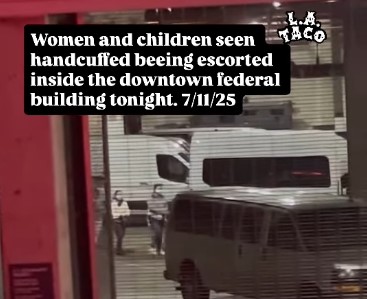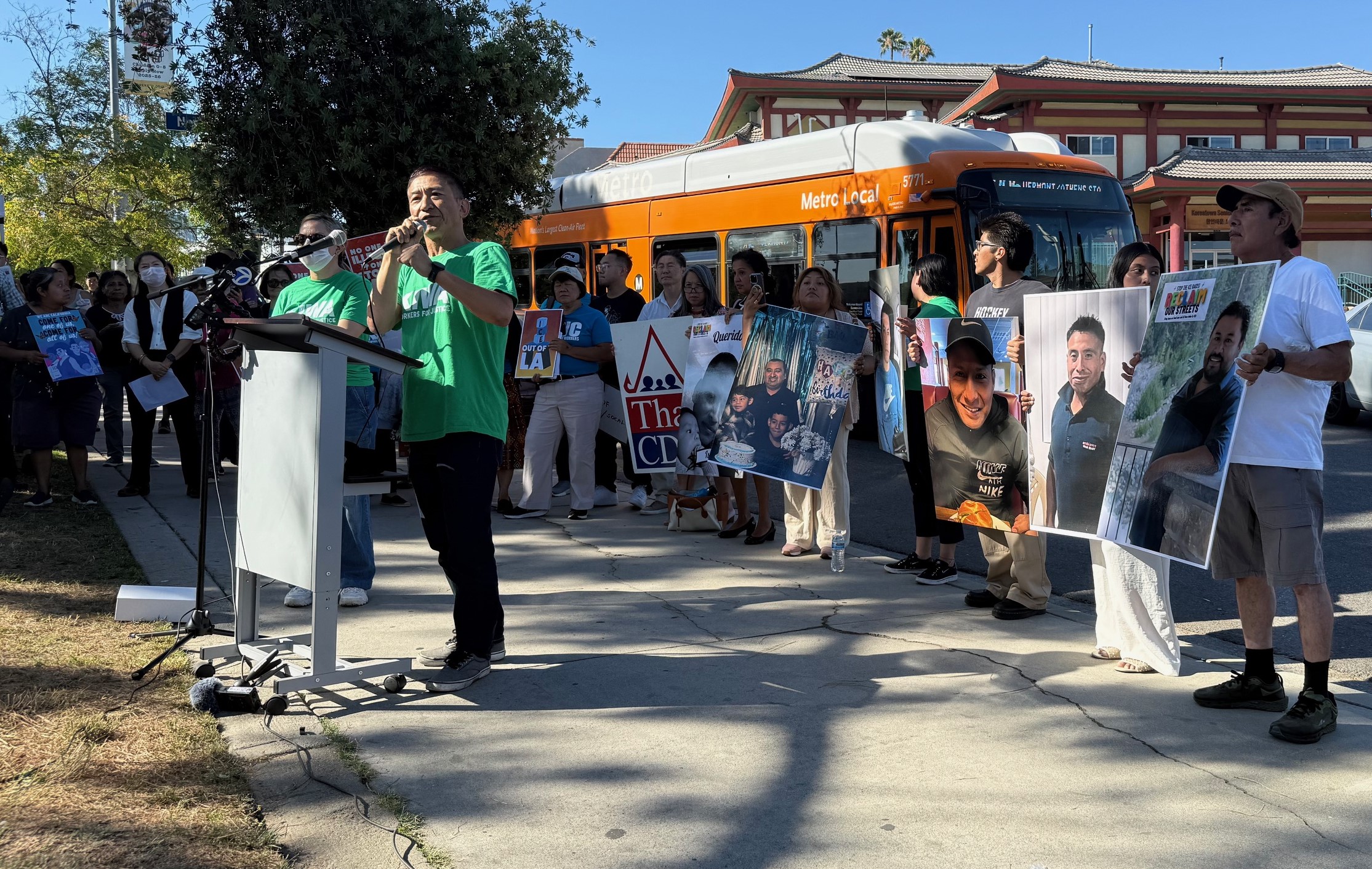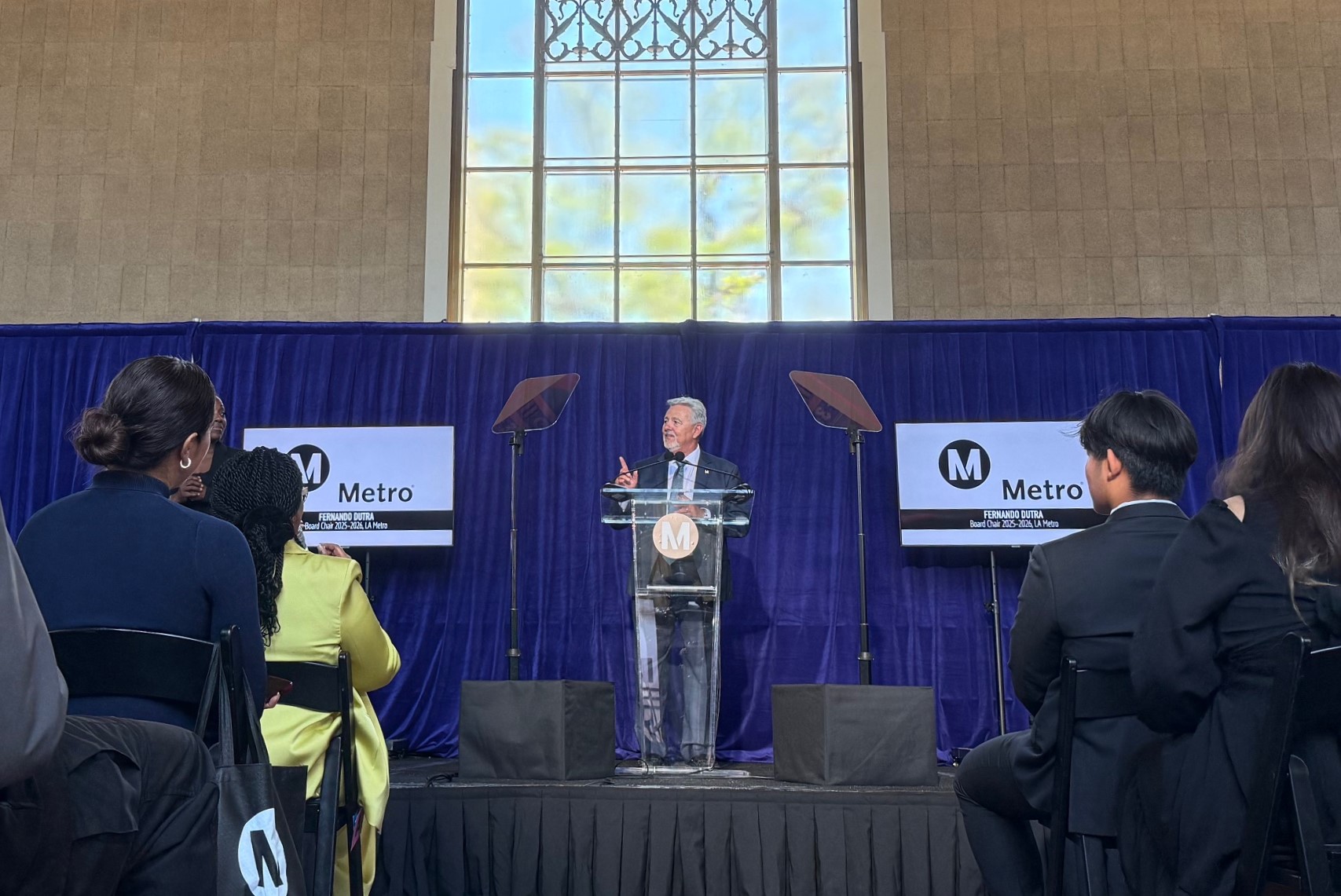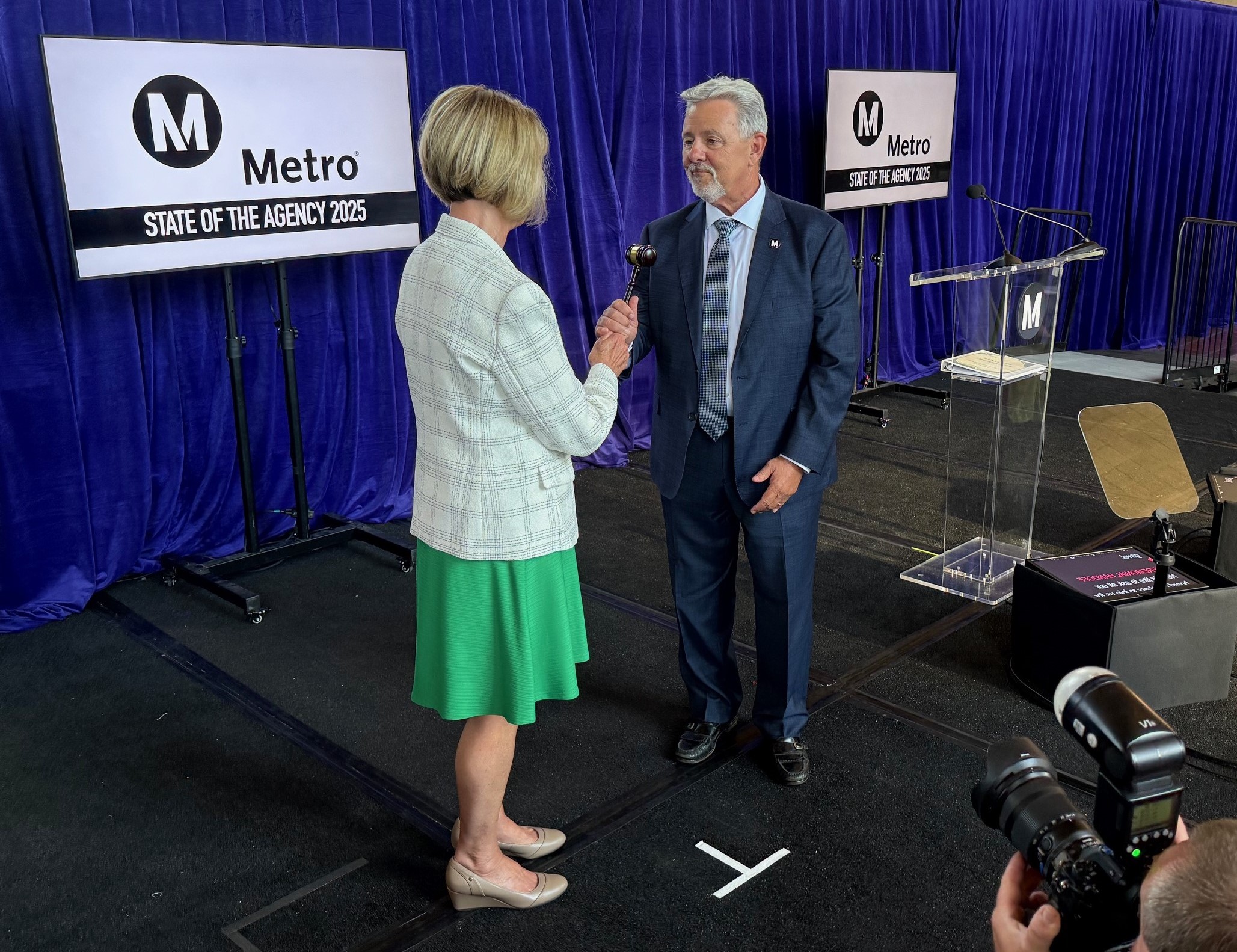
The NTSB "Recreates" the September 12 Crash in Chatsworth
Last week, Damien Goodmon penned a piece in CityWatch arguing that the focus on the actions of the conductor in the September 12 Chatsworth train crash is distracting the public from the larger issue of rail safety in the greater Los Angeles area. Goodmon sites statistics showing that Metrolink trains are three times more likely to be involved in a fatal crash than the busiest commuter railroad in the country, the Long Island Railroad. He goes on to argue:
Dismissing the Chatsworth event as a “freak accident” distracts fromthe hundreds of others that have occurred on our region’s tracks andallows our elected leaders to continue, without appropriate criticism,to translate our region’s desires for solutions to our traffic crisisinto policies of building rail quickly, cheaply and unsafely. Withpolicies and decisions to operate commuter trains on single-tracksegments with freight rail, and 225-ton light rail trains at streetlevel across major intersections right next to large urban schools andchurches there is plenty to criticize.
The catastrophic Metrolink accident should be a wake up call to ourregion. It should result in an independent top-to-bottomno-holds-barred evaluation of the rail safety policies made by thepoliticians who lead our transportation agencies. The evaluationshould result in short-term (1-2 years) and long-term (20-30 year)recommendations … mandates … to implement safety mitigation measures onour rail lines, which must be prioritized among our transportationagencies.
In the Times this weekend, Steve Hymon delves in to how Metrolink functions as an agency. The article is a pretty chilling read. The underfunded agency is run by small-town political leaders who don't have an expertise in rail or rail safety. Despite their being no history of attacks on U.S. transit systems, Metrolink has focused on keeping their riders safe from terrorists instead of other safety concerns.
The underfunded agency receives almost half of its funding from transit fares, which is well above the national average and nearly twice the recovery ratio for Metro. While there has been some discussion in other outlets that Metrolink has opposed federal regulations requiring the types of warning signals that might have prevented the crash, but perhaps that opposition has stemmed more from their inability to afford such systems than anything else? After all, the state government took another billion from transit agencies to balance the state budget just last week.
Also under fire is Metrolink's leadership. The Metrolink Board has been vocally unhappy with the actions of the staff which has led to the agency's spokesperson resigning and the CEO coming under fire for a general lack of leadership in the wake of the crash. As Board Member Mike Antonovich, who also sits on the Metro Board and the County Board of Supervisors, told the Times:
"You can't be AWOL in these situations," Antonovich said. "This was nota tremor. It was an earthquake. They must be trained and able torespond. Everyone needs to be on the same page."
As we learn more about Metrolink's leadership and budget, it's becoming clear that regardless of the actions of the engineer and his texting habits, there need to be other changes at Metrolink. Some new blood and a dedicated funding pool, so that the agency has a steady flow of income besides farebox revenue, would be a good start.
Photo: Al Seib/Times






